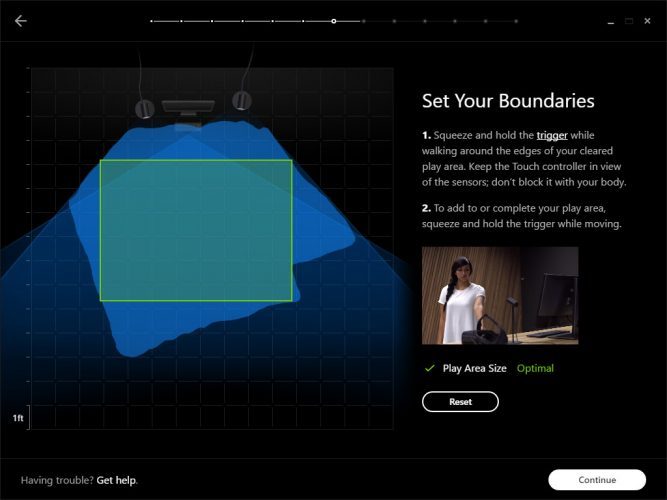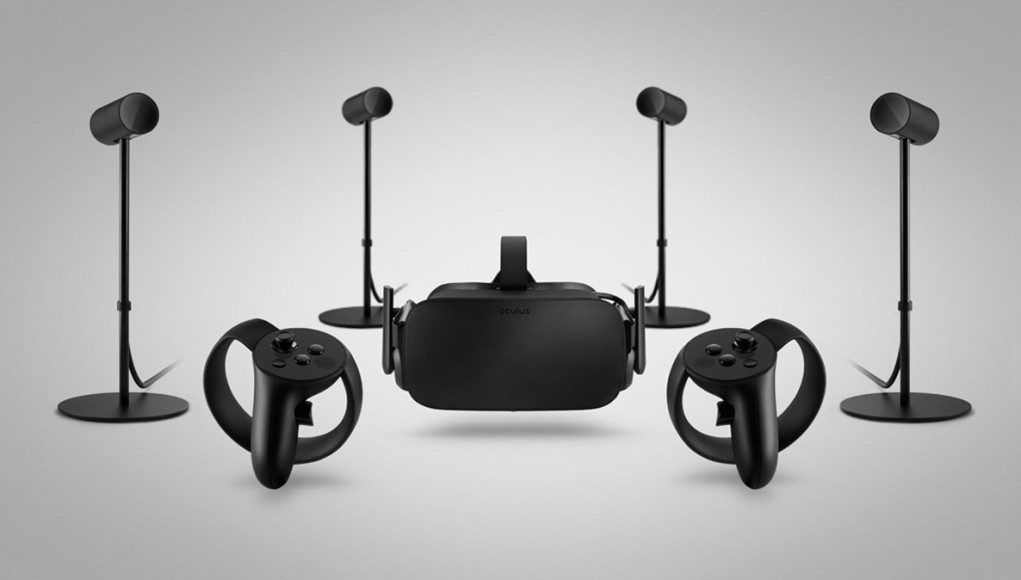As of the upcoming version 1.15, Oculus software will “fully support” the three-sensor room-scale configuration, giving VR players a large 360 degree playspace to roam, similar to the experience the Vive offered out of the gate. The update was revealed by Oculus staff on the community forum, and is now available in pre-release form for testing, available in the Public Test Channel of the Oculus software.
By going to the ‘Beta’ tab within the Oculus app’s settings, it is possible to enable the Public Test Channel, which will automatically download pre-release versions of the Oculus software. This allows Oculus to receive early feedback from user testing.
 The standard Oculus Rift and Touch setup is still a two forward-facing sensor configuration which requires players to face the sensors in order to maintain tracking of head and hands. 360 degree tracking can be achieved with two sensors placed at opposite corners of the play space, but to achieve accurate tracking with minimal occlusion problems and a room-scale range to walk around, a third sensor is recommended. This three-sensor configuration has been considered ‘experimental’ since it was introduced at the launch of the Touch controllers, and Oculus has gradually optimised its software, and tightened its recommended hardware and setup procedures.
The standard Oculus Rift and Touch setup is still a two forward-facing sensor configuration which requires players to face the sensors in order to maintain tracking of head and hands. 360 degree tracking can be achieved with two sensors placed at opposite corners of the play space, but to achieve accurate tracking with minimal occlusion problems and a room-scale range to walk around, a third sensor is recommended. This three-sensor configuration has been considered ‘experimental’ since it was introduced at the launch of the Touch controllers, and Oculus has gradually optimised its software, and tightened its recommended hardware and setup procedures.
Since the rollout of the current version 1.14 in late April, Oculus software is already ‘fully supporting’ three-sensor configurations, including integration with the setup wizard, prompting users to run a new guided setup when a third sensor is detected. However, it remains ‘experimental’, with some users still experiencing tracking and calibration problems. Version 1.15 intends to “fully support three-sensor configurations for larger room-scale setups”, and the three-sensor setup wizard has been updated “based on the latest data”. Clearly further optimisations have been made, but we’ll have to wait until the patch notes for the full details.
In addition, 1.15 allows disabling of the health and safety reminders when putting on the headset; simply acknowledge the new safety video and you’re allowed disable the message.
Out of the gate, Oculus was skeptical of room-scale sensor configurations, believing that the necessary space and complex setup would be a non-starter for many users. However, demand from VR’s early adopters led to the company taking a more serious approach to room-scale setups, with continued optimizations coming over the last few months.







